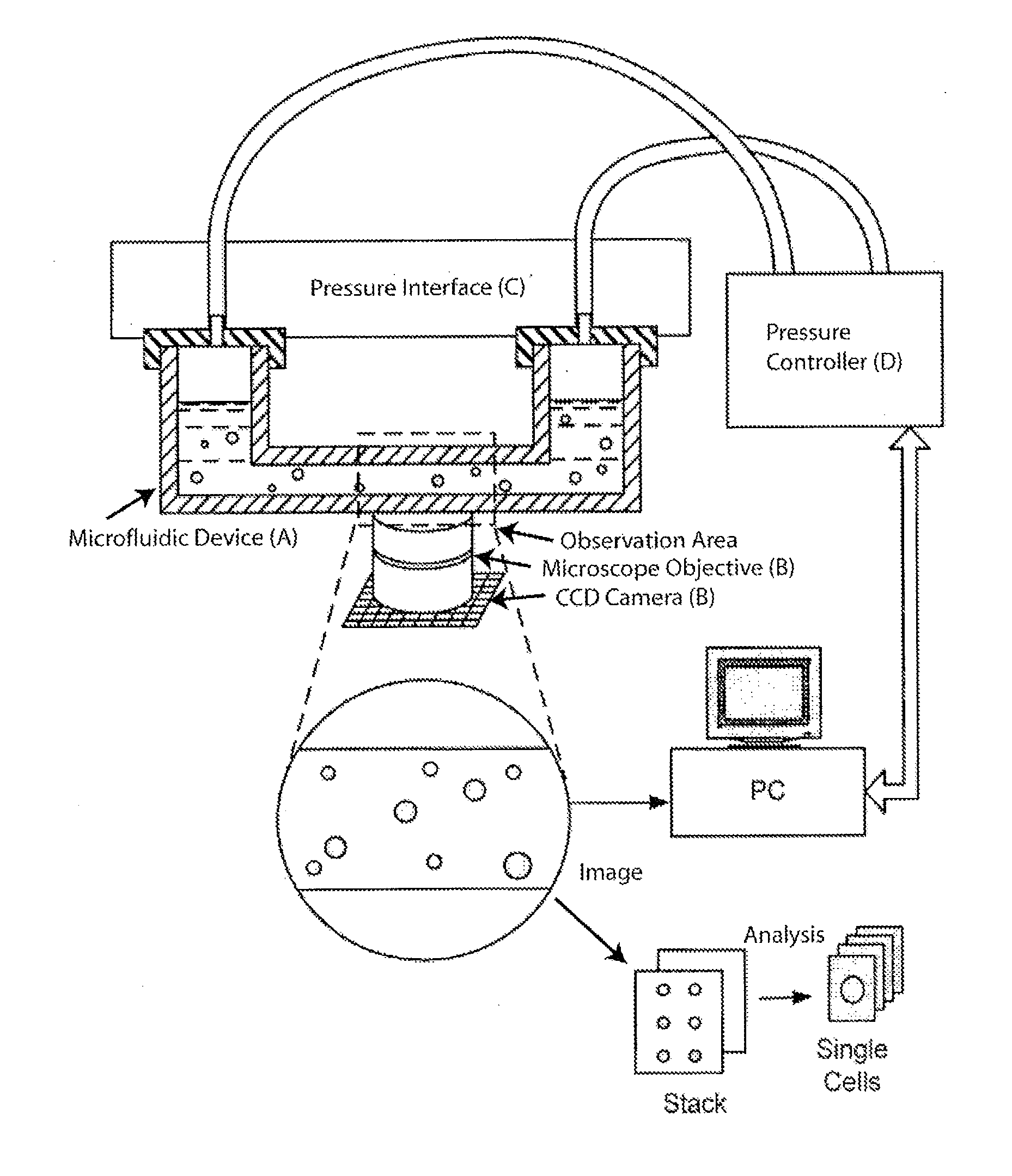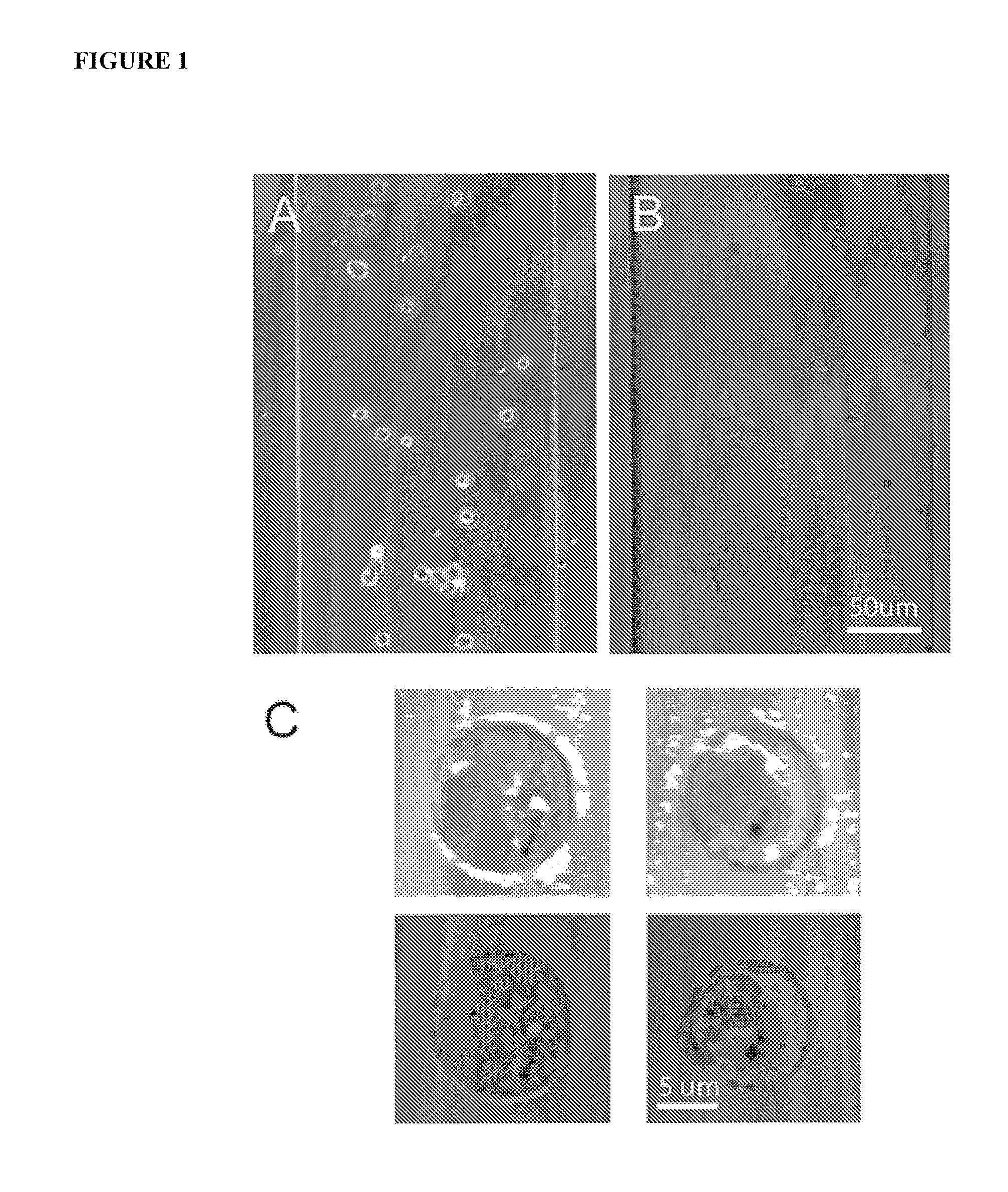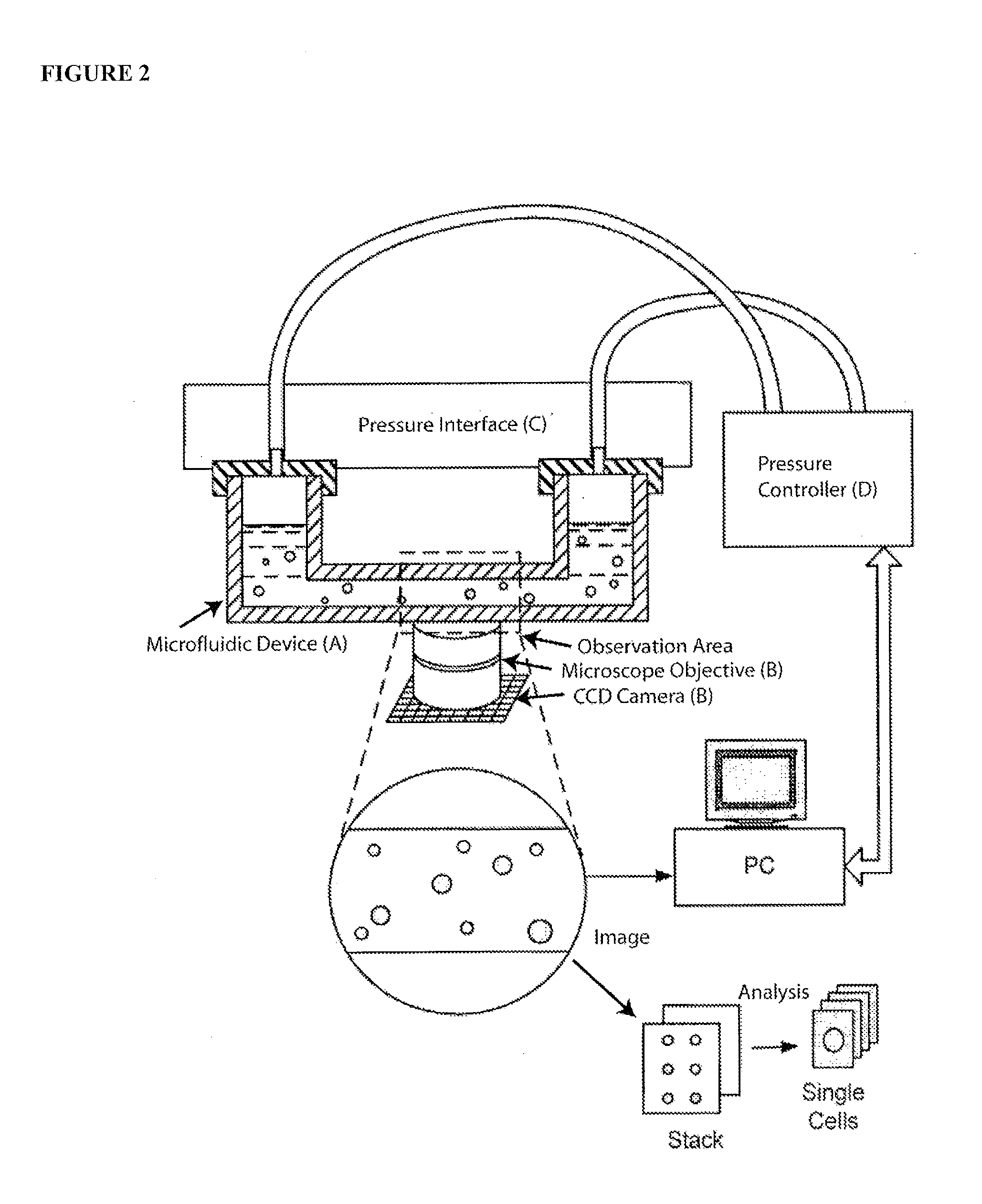Methods and apparatus for the manipulation of particle suspensions and testing thereof
a particle suspension and particle technology, applied in the field of flow cytometry, ion channel electrophysiology, single cell electroporation, controlled shear force in vivo simulation cell culture, etc., can solve the problems of loss of subcellular information, significant slowing of technique, and inability to sort cells
- Summary
- Abstract
- Description
- Claims
- Application Information
AI Technical Summary
Benefits of technology
Problems solved by technology
Method used
Image
Examples
Embodiment Construction
[0150]The apparatus and methods described herein relate generally to the manipulation of particle suspensions (e.g., cell suspensions) and are useful for applications including but not limited to flow cytometry, ion-channel electrophysiology, single cell electroporation, controlled shear force in vivo-simulating cell culture and numerous related biotechnology approaches.
[0151]Recently introduced imaging flow cytometers aim to combine the speed and ease of use of flow cytometry with the high information content of Image Scanning Cytometry (Bonetta 2005). The instrument images cells as they flow by at high velocity in a single file. The requirement of assembling in-flight images of single cells requires a great deal of custom technical development, which translates in a relatively high price for such devices (approx. $300 k for Image Stream 100) and relegates their use to core labs and pharmaceutical companies.
[0152]Disclosed herein is an alternate technique that is based on accurate ...
PUM
| Property | Measurement | Unit |
|---|---|---|
| thickness | aaaaa | aaaaa |
| depth | aaaaa | aaaaa |
| width | aaaaa | aaaaa |
Abstract
Description
Claims
Application Information
 Login to View More
Login to View More - R&D
- Intellectual Property
- Life Sciences
- Materials
- Tech Scout
- Unparalleled Data Quality
- Higher Quality Content
- 60% Fewer Hallucinations
Browse by: Latest US Patents, China's latest patents, Technical Efficacy Thesaurus, Application Domain, Technology Topic, Popular Technical Reports.
© 2025 PatSnap. All rights reserved.Legal|Privacy policy|Modern Slavery Act Transparency Statement|Sitemap|About US| Contact US: help@patsnap.com



